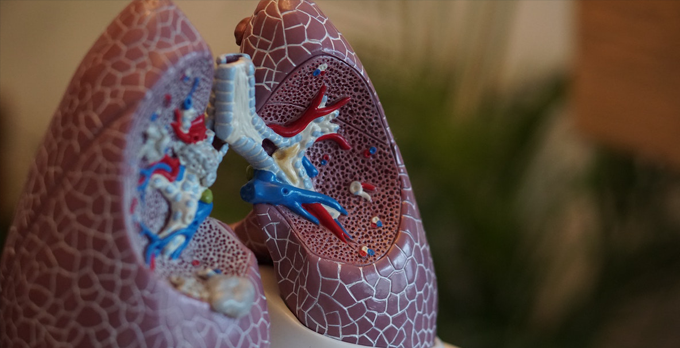In the realm of health care, respiratory therapy stands out as a crucial and dynamic profession. These unsung heroes work tirelessly to ensure that every breath a patient takes is a step towards healing and well-being. To shed light on the intricacies of this vital field, we spoke with Brandon Casey, a respiratory therapist and pulmonary educator at The University of New Mexico, whose passion for the profession is contagious.
Respiratory therapy is a specialized health care profession dedicated to helping individuals with breathing difficulties. From premature infants with underdeveloped lungs to elderly patients grappling with chronic respiratory conditions, respiratory therapists play a pivotal role in diagnosing, treating, and managing a range of respiratory issues.

If you become a respiratory therapist, the number one thing you can do is use your knowledge to teach. Every patient interaction is an opportunity to educate, and sharing knowledge will do two things: it makes you a better provider by empowering patients to make better decisions for themselves through education; and second, it keeps you sharp. It makes you smarter and helps you to not get complacent.
For Casey, becoming a respiratory therapist was a natural extension of his desire to give back to his community.
“Everybody who gets into health care wants to help people. It's our nature that draws us into this field, because ultimately, it's a challenging one,” Casey explains. “Especially once you start doing clinicals and getting hands-on patient care, you're seeing people often at their worst, and you have to be extra empathetic, caring, and giving in those moments.”
The daily responsibilities of a respiratory therapist are as diverse as the patients they serve. Whether working in a hospital, clinic, or home care setting, these professionals are on the front lines of respiratory care. They administer breathing treatments, conduct diagnostic tests, manage ventilators, and educate patients on self-care techniques.
As a pulmonary educator, Casey works in clinics with pulmonologists, educating patients with chronic obstructive pulmonary disorder (COPD), asthma, and about smoking cessation.
“I created the program where we do referrals to get patients follow-up care, so that way we're not just saying ‘hey smoking is bad’, we're also giving them continuous help for the first two years of smoking cessation.”
Becoming a respiratory therapist requires a combination of formal education and hands-on clinical experience. Many aspiring respiratory therapists pursue an associate degree, while others opt for a bachelor's degree to enhance their skills and career prospects. Casey began his education at Central New Mexico Community College (CNM), which led him to UNM.
“You start the (CNM) program and within the first two weeks you're in the hospital, starting clinicals immediately,” Casey says. “My first hospital was UNM, and I had great preceptors and teachers here. Not only were they focused on teaching us where we needed to learn at our skill level, they also went above and beyond. Since UNM is a Level-I Trauma hospital, we would go and find all the most severe patients who came in to see how it worked and get that experience. I knew as soon as I saw my first high acuity patient that I would love the emergency department. I loved the high energy and somewhat controlled, chaotic atmosphere.”
While the rewards of being a respiratory therapist are immense, the field does come with its share of challenges. Dealing with patients in critical conditions can be emotionally taxing. Instead of letting himself feel overwhelmed by those challenges, Casey embraces what many might find counterintuitive – he gives more.
“UNM had a career day that I was able to volunteer for and you get to see the benefit of doing extracurricular activities in the field, and the value that brings not only to you as somebody who's constantly growing, but the ways you’re able to reach more people and in different ways,” Casey says.
For example, for the last three years Casey has participated in the departmental engagement with the Peanut Butter and Jelly Foundation in New Mexico, which provides gifts for newly housed families who are celebrating their first Christmas. Whether it's at work or outside of work, Casey encourages aspiring health care professionals to look for new and fulfilling ways to help people.
For those considering a career in respiratory therapy, Casey says the most important advice he can offer is to embrace lifelong learning.
“If you become a respiratory therapist, the number one thing you can do is use your knowledge to teach. Every patient interaction is an opportunity to educate, and sharing knowledge will do two things: it makes you a better provider by empowering patients to make better decisions for themselves through education; and second, it keeps you sharp. It makes you smarter and helps you to not get complacent.”
Casey's insights provide a glimpse into the heart of the vital health care discipline of respiratory therapy, where every breath counts. For Casey, service is at the heart of his work, and he encourages anyone considering respiratory therapy – or any career in healthcare – to focus outward, on the community and the patients who need care.
If you too would like to become a source of positive change in your community as a health care professional, UNM offers support and resources. Click here to learn more about Communities to Careers programs that may be the perfect fit for you.
